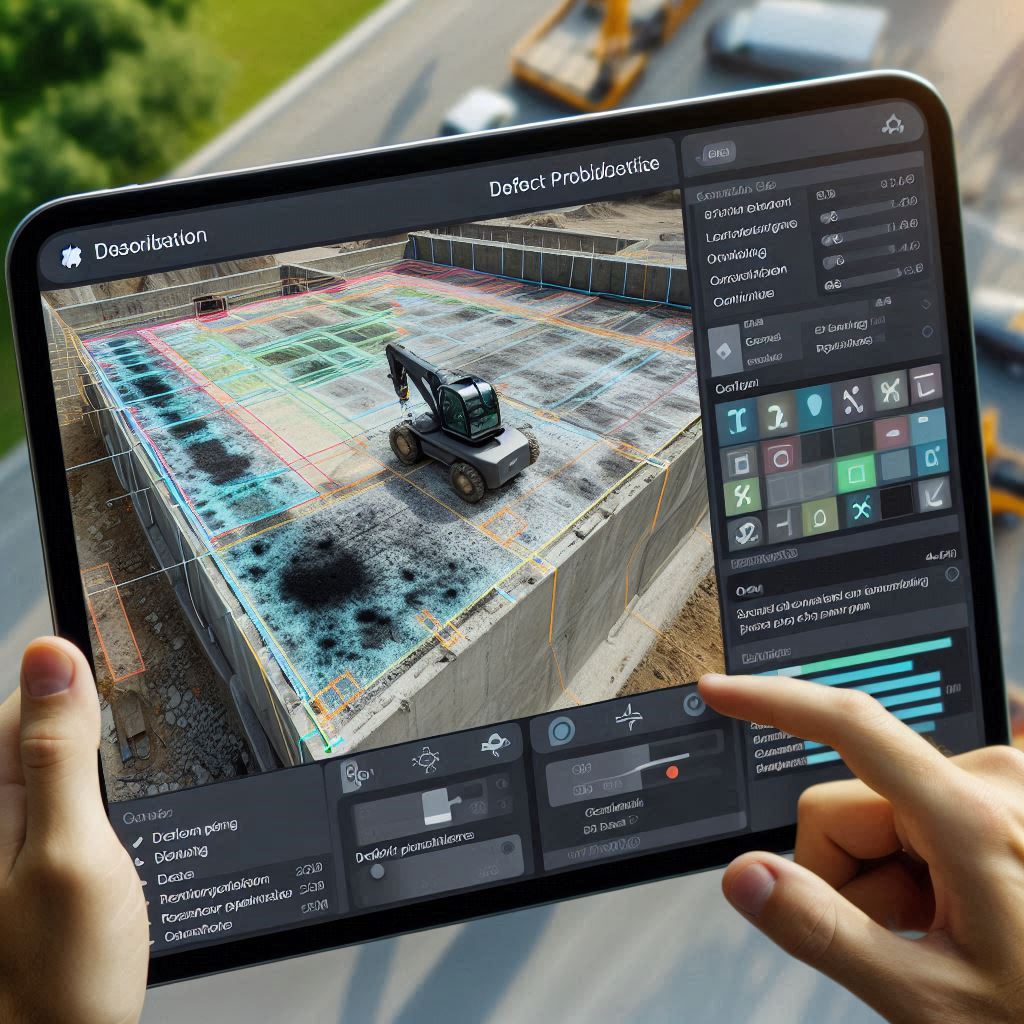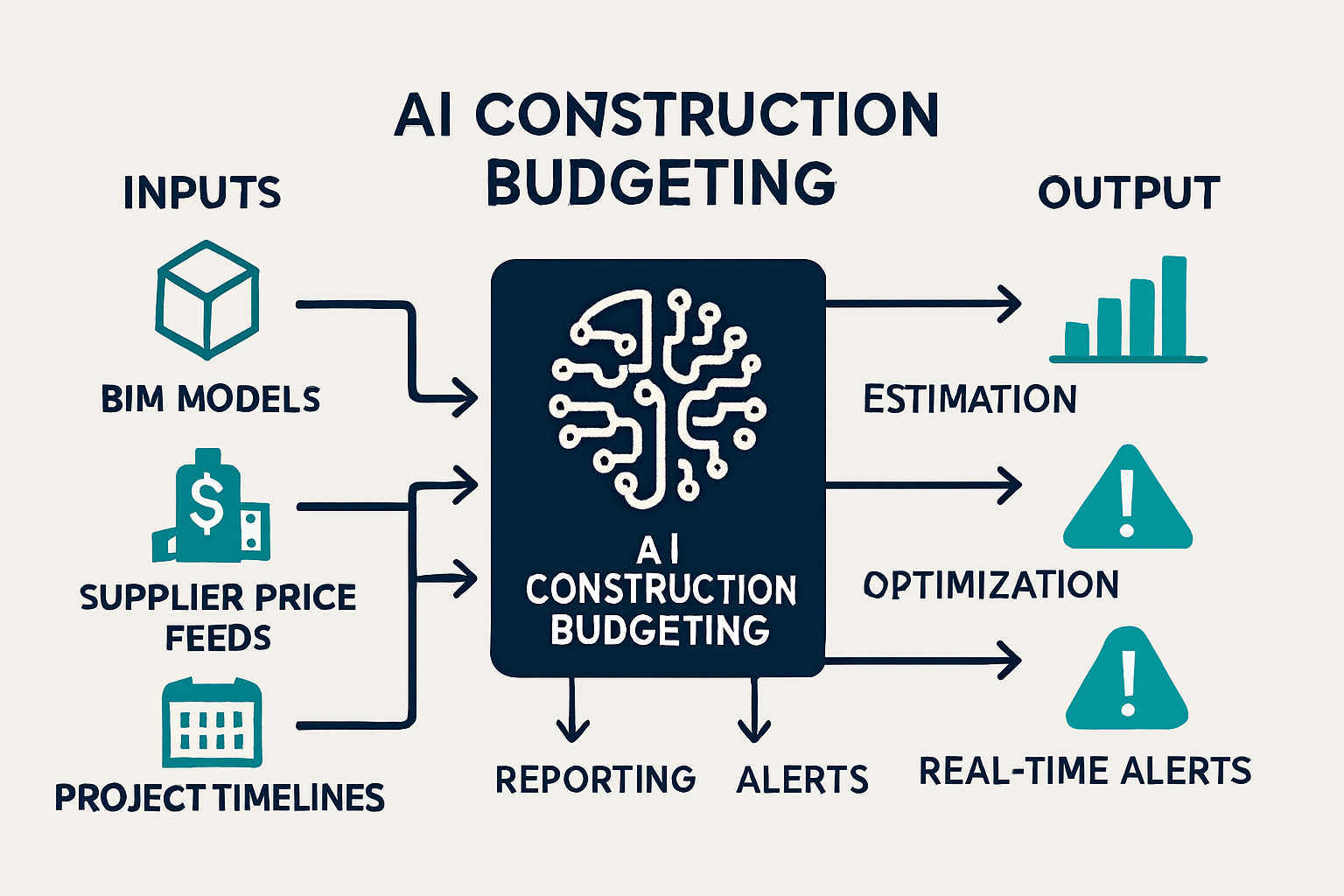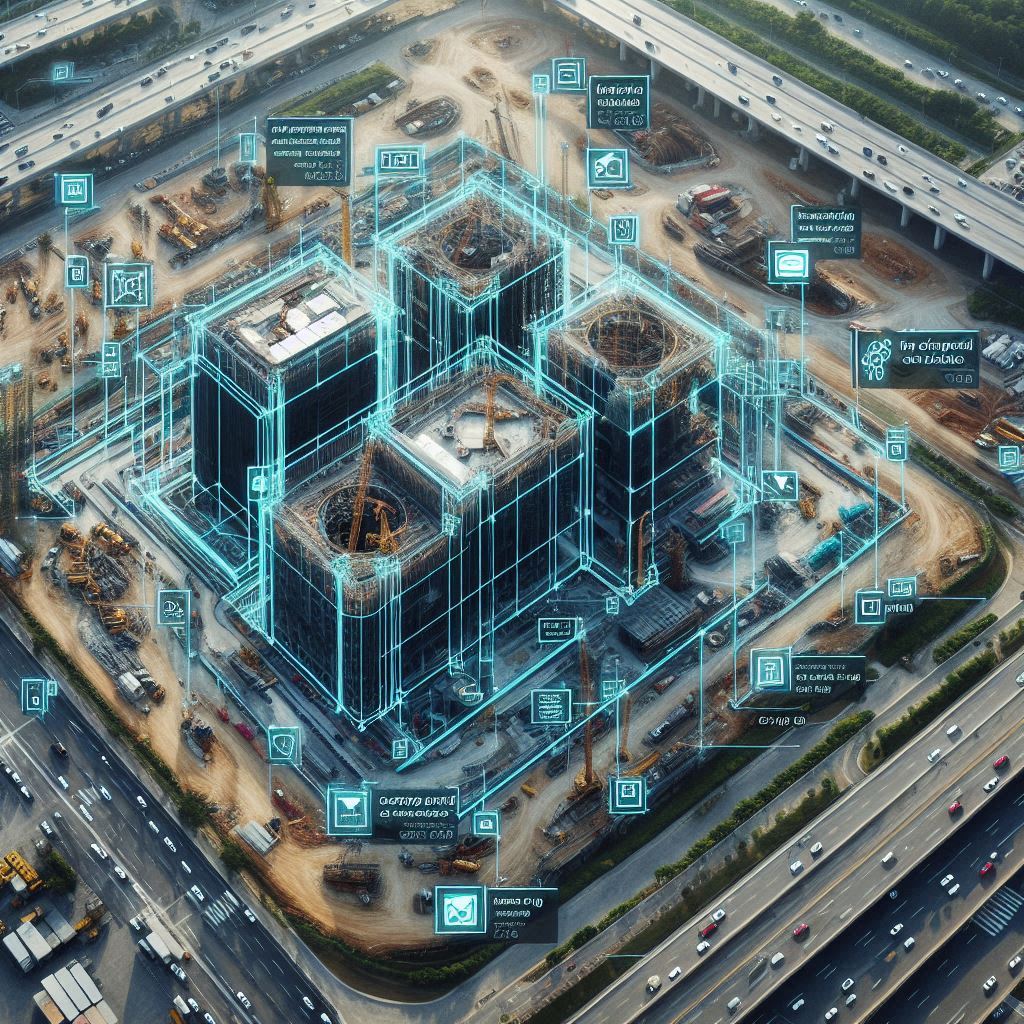
In an industry where precision, safety, and durability are paramount, quality assurance (QA) in construction plays a vital role. From material testing to structural integrity and adherence to building codes, QA ensures that every element of a construction project meets specified standards. Traditionally, this process has relied heavily on manual inspections, checklists, and human oversight. However, with the growing complexity of modern projects and the vast amount of data generated, traditional QA methods face increasing challenges.
Enter Machine Learning (ML)—a subset of artificial intelligence that is revolutionizing quality assurance in construction. ML enables project teams to analyze patterns, detect anomalies, and predict issues before they compromise quality, all with unprecedented speed and accuracy.
The Traditional QA Challenge
Construction QA has long suffered from inefficiencies:
Machine Learning is changing the game by turning raw construction data into actionable insights for QA and quality control (QC).
How Machine Learning Enhances Construction QA
Benefits of ML-Driven QA in Construction
Use Cases and Examples
Challenges and Considerations
The Road Ahead
As construction projects grow in scale and complexity, quality assurance will only become more critical. Machine learning offers a scalable, data-driven approach that not only enhances QA effectiveness but also supports a culture of continuous improvement. With further integration into digital twins, augmented reality, and mobile inspection platforms, ML is set to become a cornerstone of intelligent, high-performance construction.

Accurate cost estimation and efficient budget management are critical to the success of any construction or engineering project. However, traditional methods often rely on manual calculations, historical cost data, and expert judgment, which can be time-consuming and susceptible to human error. Enter Artificial Intelligence (AI)—a transformative technology that is revolutionizing the way construction professionals approach cost planning and financial control.
By leveraging AI, project managers can forecast expenses more accurately, detect financial risks early, and optimize budget allocations in real time. This article explores how AI enhances cost estimation and budget optimization, the technologies involved, and real-world benefits for the Architecture, Engineering, and Construction (AEC) industry.
The Challenges of Traditional Cost Estimation
Before delving into AI-powered solutions, it’s important to understand the limitations of conventional cost estimation practices:
How AI Transforms Cost Estimation
AI improves both the speed and accuracy of cost estimation by learning from large datasets and continuously refining its predictions. Here’s how:
Budget Optimization with AI
Beyond estimation, AI plays a powerful role in ongoing budget optimization:
Real-World Applications
Benefits of AI in Cost and Budget Management
Challenges and Considerations
Conclusion
Artificial Intelligence is not replacing cost estimators or project managers—it’s making their work smarter, faster, and more accurate. By automating data analysis, integrating real-time inputs, and learning continuously from outcomes, AI empowers construction professionals to estimate with confidence and manage budgets proactively. As AI adoption grows, it will become a standard tool in the financial toolkit of every construction project.

In the fast-paced world of construction, keeping projects on schedule and within budget is a continuous challenge. Traditional methods of progress tracking—manual inspections, photography, and spreadsheet updates—are labor-intensive, prone to error, and often fail to deliver a complete picture of a project’s status.
Enter drones and artificial intelligence (AI). Together, these technologies are revolutionizing construction monitoring by providing real-time, high-resolution data and transforming it into actionable insights. Drones act as the eyes in the sky, capturing aerial visuals and spatial data, while AI processes this information to measure progress, detect deviations, and enhance decision-making.
In this article, we explore how drones and AI work together to improve construction monitoring, the benefits they bring, and practical use cases shaping the industry today.
How Drones Collect Data on Construction Sites
Unmanned Aerial Vehicles (UAVs), commonly known as drones, are equipped with cameras, LiDAR sensors, thermal imagers, and GPS modules to capture high-resolution imagery and spatial data from above. Regular drone flights over a construction site generate datasets that can be compared over time to identify progress, issues, or safety risks.
Key types of drone data used for monitoring include:
How AI Enhances Drone Data for Progress Tracking
While drones gather data, AI adds intelligence. Machine learning algorithms and computer vision techniques analyze visual and spatial information to deliver meaningful insights.
Here’s how AI contributes:
Applications in Real-World Construction Projects
Benefits of Using Drones and AI
Challenges and Considerations
The Future of Drone-AI Integration in Construction
As drones become more autonomous and AI algorithms more sophisticated, the synergy between the two will deepen. We can expect:
Together, these technologies promise a future where construction sites are not just monitored—but managed, optimized, and predicted in real-time.
Conclusion
Drones and AI are more than digital tools—they are strategic enablers of smarter construction. By automating monitoring and transforming data into insights, they empower project teams to reduce risk, cut costs, and deliver high-quality builds on time. As these technologies continue to evolve, embracing them will be key to staying competitive in the next era of construction innovation.

The construction industry is undergoing a profound digital transformation, driven by the integration of cutting-edge technologies such as artificial intelligence (AI) and digital twins. These tools are not just buzzwords—they are revolutionizing how construction projects are planned, monitored, and maintained. Together, AI and digital twins enable smarter decision-making, better risk management, and enhanced lifecycle performance of built assets.
In this article, we explore how digital twins and AI intersect in the construction sector, their benefits, real-world applications, and what the future holds.
What Are Digital Twins?
A digital twin is a dynamic, real-time digital representation of a physical object, system, or process. In construction, this means creating a virtual replica of a building, bridge, road, or even an entire construction site that evolves over time using live data from sensors, BIM (Building Information Modeling), and IoT devices.
Key features of digital twins in construction include:
How AI Enhances Digital Twins
While a digital twin visualizes and tracks an asset’s current state, AI brings intelligence to the system. When combined, they form a powerful ecosystem capable of predictive analytics, anomaly detection, and autonomous decision-making. Here’s how AI amplifies the value of digital twins:
Applications in Construction Projects
Benefits of Combining AI and Digital Twins
Challenges to Implementation
The Future Outlook
As 5G, edge computing, and AI models become more accessible, the use of digital twins in construction will grow more sophisticated and widespread. We can expect:
Ultimately, digital twins coupled with AI will drive a new standard in how construction projects are executed, maintained, and evolved over time—more intelligent, efficient, and resilient than ever before.
Conclusion
Digital twins and AI are not just futuristic concepts—they’re reshaping construction today. By merging real-time data with intelligent analysis, these technologies empower construction professionals to build smarter, faster, and safer. As adoption increases, they will become the cornerstone of a digitally enabled and sustainable built environment.

The fusion of smart materials and artificial intelligence (AI) is ushering in a transformative era in modern engineering. From buildings that respond to their environment to aircraft components that heal themselves, these intelligent systems are reshaping how engineers design, build, and maintain everything from infrastructure to consumer electronics.
Smart materials—also known as intelligent or responsive materials—can adapt to external stimuli such as heat, pressure, moisture, electric or magnetic fields. When paired with AI, these materials become even more powerful, enabling autonomous behavior, predictive maintenance, and adaptive performance across a range of engineering fields.
In this article, we explore what smart materials are, how AI enhances their capabilities, and the cutting-edge applications and benefits of this dynamic duo.
What Are Smart Materials?
Smart materials are engineered substances that respond predictably to environmental changes. Some common types include:
These materials offer engineers the ability to build systems that are not only more efficient but also more adaptable and longer-lasting.
The Role of AI in Smart Material Systems
While smart materials respond to stimuli, AI gives them the “brain” to process data, learn from their environment, and make intelligent decisions. Here’s how AI amplifies their impact:
Smart materials embedded with sensors can generate large volumes of data—about temperature changes, structural strain, vibration, etc. AI algorithms process this data in real time to enable dynamic responses. For example, AI can control the actuation of SMAs in response to stress loads in aerospace applications, ensuring optimal shape and performance.
AI models can monitor the condition of smart materials over time, predicting wear, fatigue, or failure. This is especially useful in structural health monitoring of bridges, buildings, and pipelines. Rather than relying on periodic inspections, engineers can intervene only when AI predicts that degradation is imminent.
AI helps engineers design smart material systems by simulating thousands of material configurations and behavior models. Machine learning accelerates material discovery by predicting how compositions will respond under certain conditions—saving time and costs in experimentation.
In robotics and biomechanics, AI enables adaptive behavior. For instance, AI algorithms control soft robots built with shape-shifting materials to walk, grip, or change posture based on terrain or user needs. This also extends to prosthetics and wearables that adapt to the user’s motion and environment.
Key Applications
Aircraft wings built with smart composites can morph during flight for better aerodynamics. AI algorithms optimize the morphing process in response to airspeed, turbulence, and load conditions, improving fuel efficiency and safety.
Bridges and buildings embedded with smart concrete or piezoelectric sensors can detect early signs of stress or cracking. AI processes the data to forecast potential failure points and recommend proactive reinforcement.
Solar panels with electrochromic coatings can adjust transparency for optimal energy absorption. AI models control the panels’ state depending on sunlight intensity and environmental factors.
Smart polymers are being used in implants that adjust to body temperature and pH. AI enables real-time monitoring of drug delivery systems or stents that adapt to physiological conditions.
Touchscreens, flexible displays, and wearables are increasingly using smart materials that react to touch, pressure, or bending. AI enhances user interfaces by learning usage patterns and predicting actions for more seamless experiences.
Benefits of Combining Smart Materials with AI
Challenges and Considerations
The Future of Smart Materials and AI
As AI models become more sophisticated and materials science advances, we can expect:
Conclusion
The convergence of smart materials and AI represents one of the most promising frontiers in engineering. These intelligent systems can sense, decide, and act—creating structures and devices that are more efficient, safer, and responsive than ever before. As research progresses and costs decrease, we’ll see wider adoption across industries, making the built world more intelligent, resilient, and sustainable.

Construction sites are inherently hazardous environments, with multiple risks arising from heavy machinery, high-altitude tasks, and the dynamic nature of operations. Despite strict safety protocols, accidents and risks persist. This is where Artificial Intelligence (AI) is transforming the game, offering advanced solutions for safety and risk management on construction sites.
AI systems can proactively identify potential risks by analyzing vast amounts of data collected from sensors, cameras, and historical project records. Machine learning algorithms process this data to predict safety hazards, such as structural weaknesses, equipment malfunctions, or unsafe worker behaviors.
For example, AI-powered predictive models can flag areas prone to collapses based on soil conditions, stress levels in materials, or weather data. Early risk identification enables teams to take preventative measures, reducing the likelihood of incidents.
AI-powered computer vision systems are revolutionizing how safety is monitored in real time. Cameras installed on sites, integrated with AI, can detect unsafe actions like workers not wearing proper personal protective equipment (PPE) or entering restricted zones. Alerts are then sent to supervisors to address these issues immediately.
Drones equipped with AI enhance surveillance further, offering aerial views of the site to monitor ongoing activities and spot potential dangers in areas inaccessible to human inspectors.
Safety training is another area where AI is making a significant impact. Virtual Reality (VR) and AI simulations allow workers to experience real-life scenarios in a safe environment. These simulations can mimic scenarios like machinery failures, fires, or falls, helping workers learn how to respond effectively without being exposed to real risks.
Additionally, AI tools assess training effectiveness by tracking individual performance and identifying areas for improvement, ensuring workers are better prepared for on-site challenges.
In the event of an incident, AI can streamline emergency response efforts. AI-powered systems can guide evacuation processes by using real-time site data to identify the safest routes and alert workers accordingly. These systems can also help coordinate first responders by providing accurate location data of injured workers.
AI consolidates data from multiple sources—such as IoT sensors, project management software, and safety inspections—to provide actionable insights. By analyzing trends and patterns, AI systems help construction managers make informed decisions to enhance safety protocols and optimize site operations.
The integration of AI in construction site safety and risk management is only beginning. As AI technologies continue to evolve, we can expect further advancements, such as wearable devices with embedded AI for real-time health monitoring, advanced robotics to handle hazardous tasks, and even autonomous construction equipment designed to minimize human error.
By adopting AI-driven solutions, the construction industry can significantly reduce accidents, improve worker safety, and create a more efficient, risk-free work environment.

The construction industry is undergoing a technological revolution, with Robotics and Artificial Intelligence (AI) playing a pivotal role in shaping the future workforce. As labor shortages and the need for increased productivity challenge the sector, these cutting-edge technologies are stepping in to transform how we build.
Robots are proving invaluable for automating repetitive, labor-intensive tasks such as bricklaying, welding, and concrete pouring. Autonomous machines can complete these jobs faster, more consistently, and with less waste, freeing up human workers to focus on more complex activities.
For instance, robotic bricklayers like SAM (Semi-Automated Mason) can lay thousands of bricks in a single day, significantly outpacing human capabilities while maintaining precision and efficiency.
One of the biggest advantages of robotics in construction is improving worker safety. Robots can take on dangerous tasks, such as demolition, working in hazardous environments, or handling heavy materials, reducing the risk of accidents and injuries.
Paired with AI, these machines can analyze site conditions and identify potential safety hazards, ensuring a safer working environment.
AI is reshaping construction design and planning by optimizing workflows, resource allocation, and project timelines. Through machine learning, AI systems analyze historical data to predict delays, optimize material usage, and recommend design changes for better efficiency.
When integrated with robotics, AI ensures seamless coordination between machines and human workers, streamlining the construction process.
Collaborative robots, or “cobots,” are designed to work alongside humans, enhancing productivity while maintaining safety. Cobots assist workers by lifting heavy objects, precision drilling, or welding, reducing the physical strain on human laborers.
These robots are equipped with advanced sensors and AI algorithms, enabling them to adapt to dynamic construction environments and respond to real-time changes.
While robotics and AI are automating many aspects of construction, they are also creating opportunities for upskilling and new roles. Workers are transitioning from manual tasks to overseeing robotic operations, programming AI systems, and maintaining advanced equipment.
The future workforce in construction will be a blend of human expertise and robotic precision, driving innovation and efficiency.
Robotics and AI are revolutionizing the construction industry by addressing labor shortages, improving safety, and enhancing productivity. As these technologies continue to advance, the construction workforce will evolve into a sophisticated collaboration between humans and machines. Embracing this transformation is key to building a smarter, more efficient future.